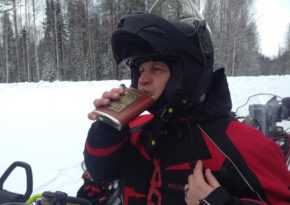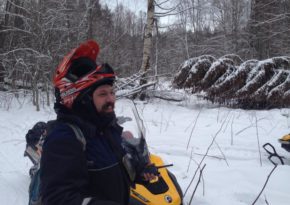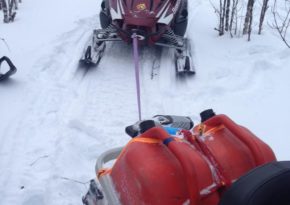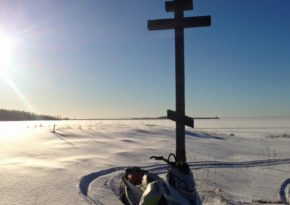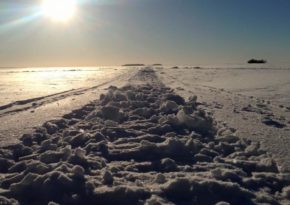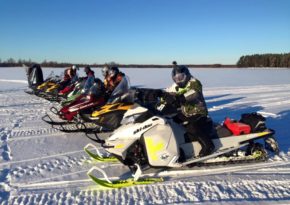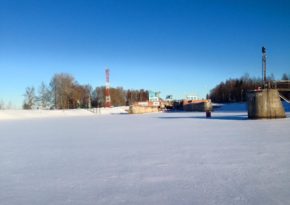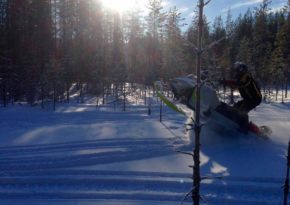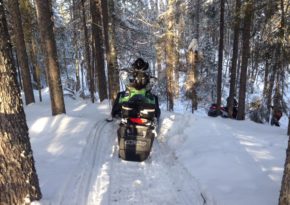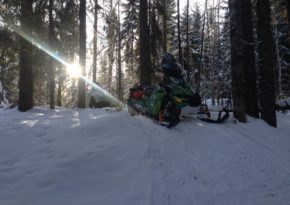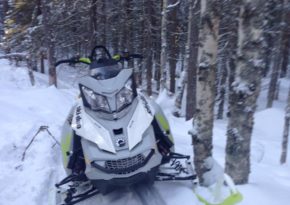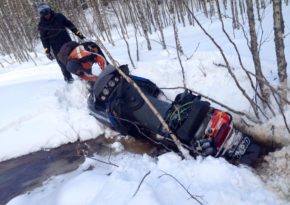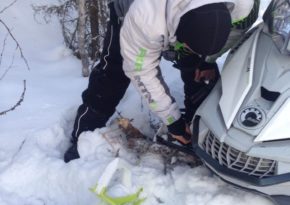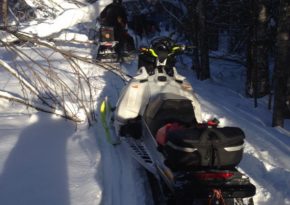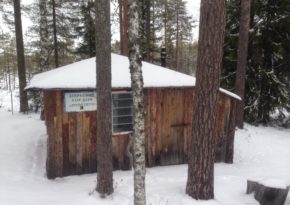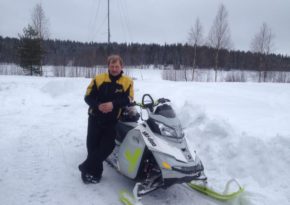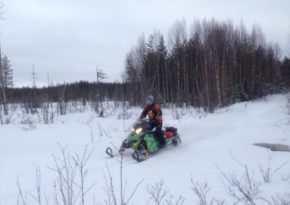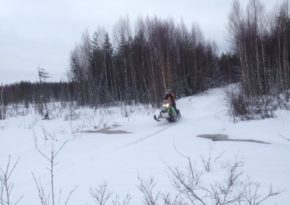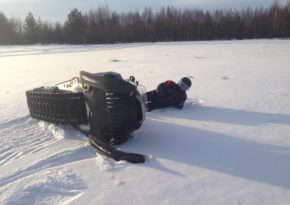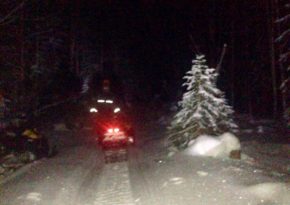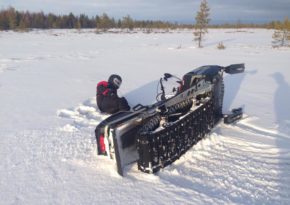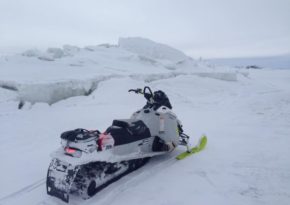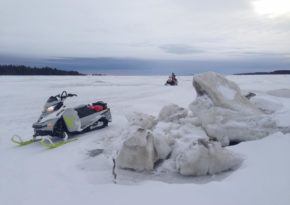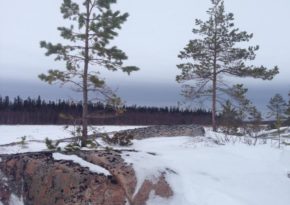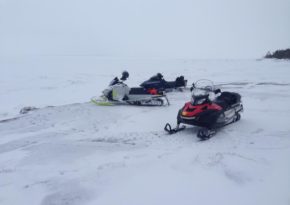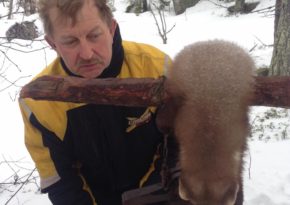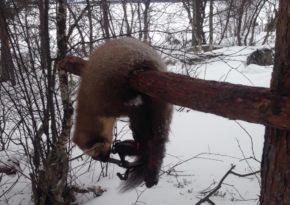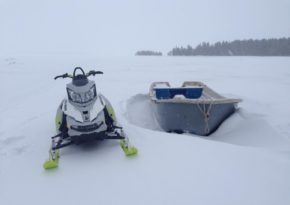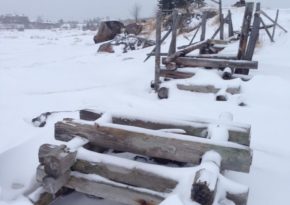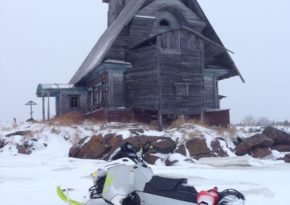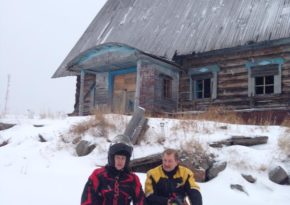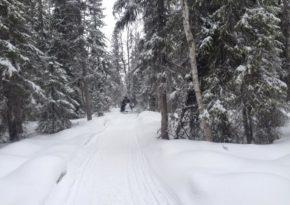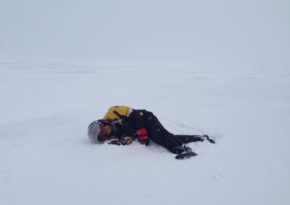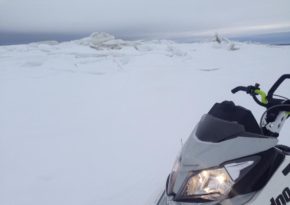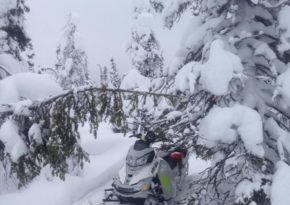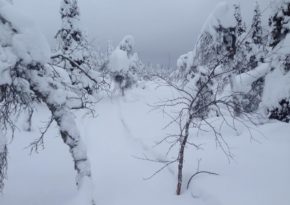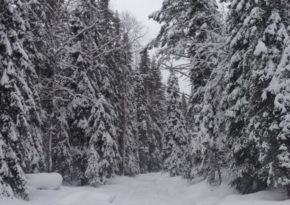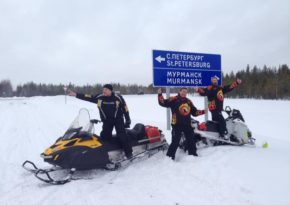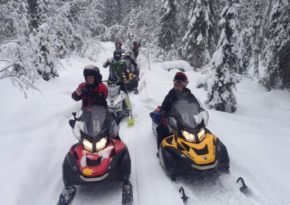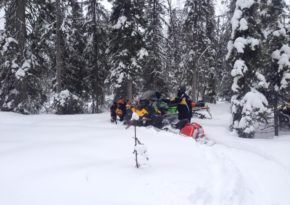A snowmobile expedition to Karelia
And here we go again to seek for some new adventures!
The Moscow-Petrozavodsk express train crawled like a green boa through the stone jungle of the capital and disappeared in the damp blackness of a moonless night, and only the sound of tapping the rails was heard. Our winter expedition to Karelia and Murmansk by snowmobiles has begun! Seven members of our team are going to overcome 1,700 km across forests, fields, frozen rivers and lakes of Karelia and finish the route on the Kola Peninsula in eight days. The start is tomorrow at noon, and meanwhile we are sitting in comfortable compartments of the sleeper, having a glass of Scotch single malt whiskey with domestic bacon, telling each other jokes and recalling various funny stories from our previous trips…
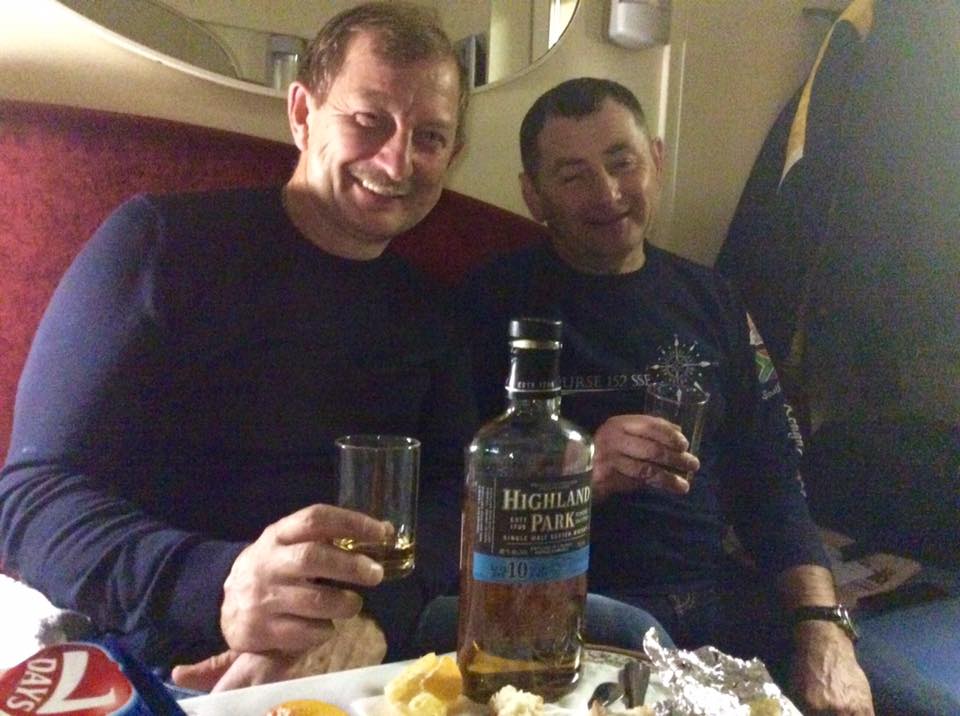
So, the first 200 kilometers of our expedition are behind us. 90% of today's route we proceeded along the ice of Lake Onega. It is a huge expanse covered with a thin layer of snow, a kind of endless icy desert.
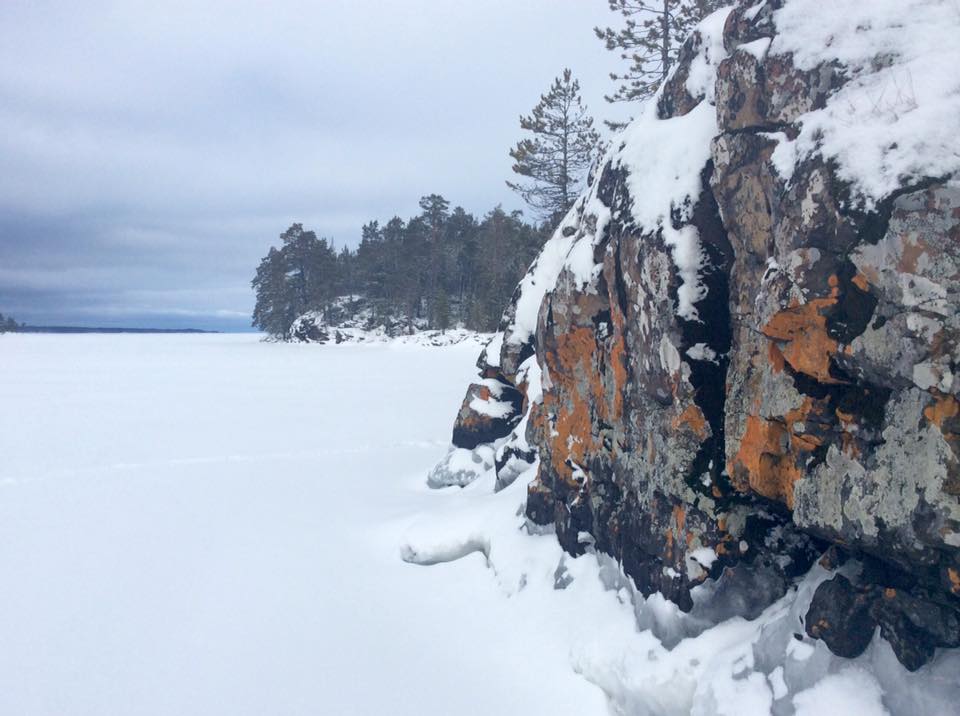
Our main intermediate goal was to visit the famous museum and national reserve on Kizhi Island and the destination took place in a small village called Povenets, not far from Medvezhegorsk. Today we experienced the first problem. Not reaching just a couple of kilometers to the island, one snowmobile broke down. The hefty Arctic Cat refused to move on anymore. The breakdown turned out to be quite serious and it took us several hours to fix it, which knocked us a little out of the schedule.
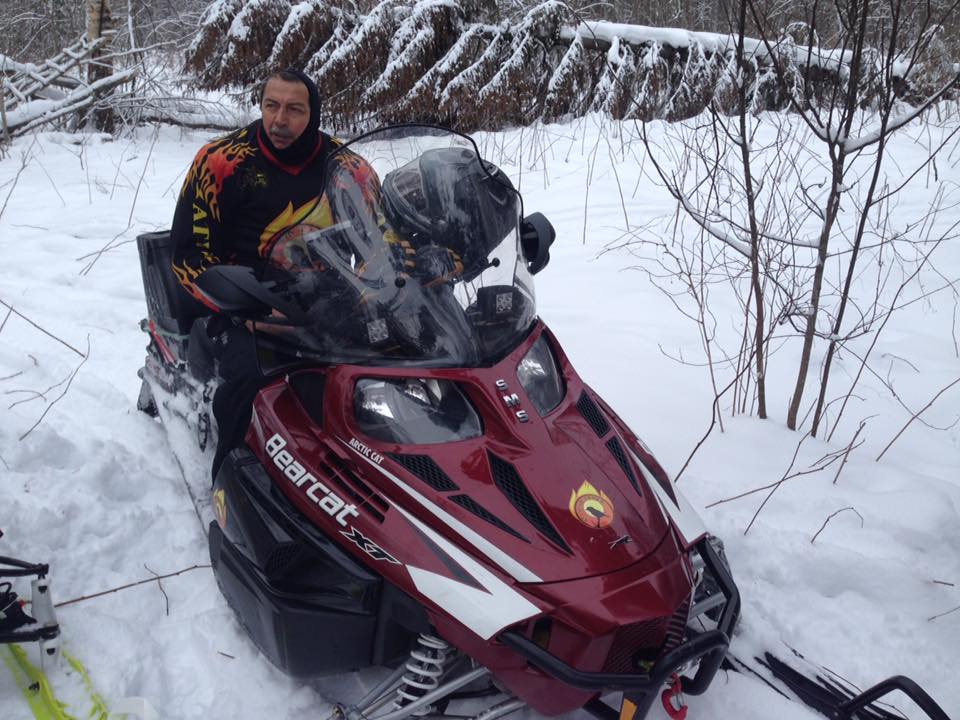
We were lucky that the frost was not severe, as I had to disassemble and assemble half of the engine right on the ice. Anyway, the tour of the famous monument of Russian wooden architecture was a success! We saw churches and chapels of amazing beauty, residential wooden huts full of stuff and with saunas and a mill, which were built two or three hundred years ago. How could all this have been preserved till nowadays?
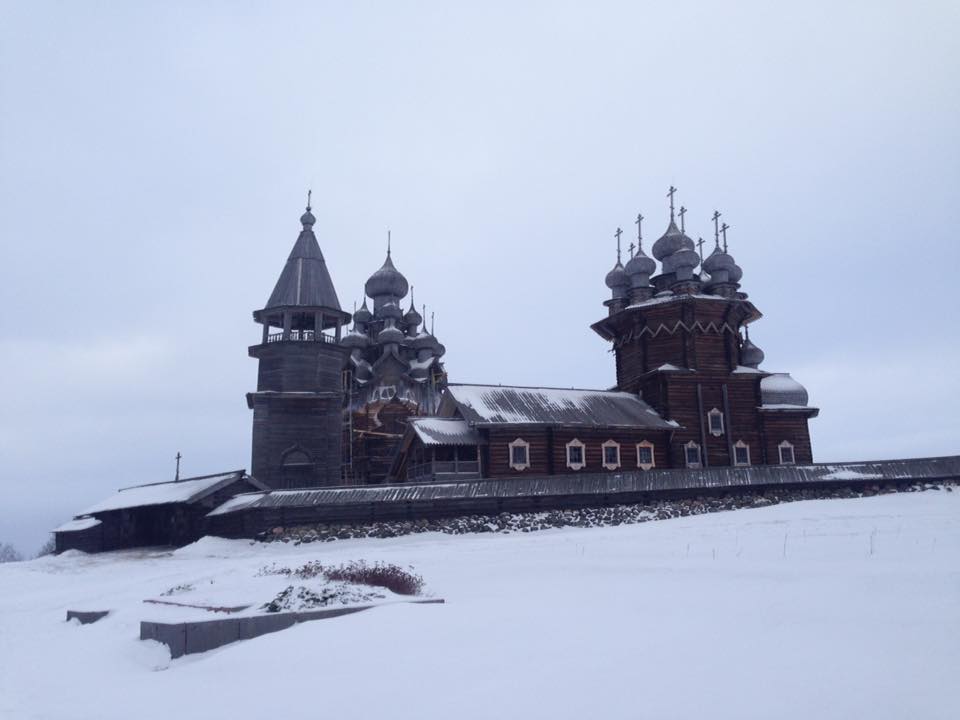
umns=»4″ ids=»2572,2570,2568,2567″]
We overcame the second half of the way at night, when the frost intensified and the light from the headlights made its way through the snowdrift, picking out the silhouettes of snow dunes and ice hummocks. We kept going at a speed of 60-80 km/h. It was dangerous to go faster, as we could have crashed against the heaving ice or got into a water pit, which we spotted quite often on our way.
At 8:30 p.m. we finally got to the campsite on the very shore of the Onega, where the kind hosts were waiting for us with a wonderful dinner with Karelian tinctures and a fine sauna!
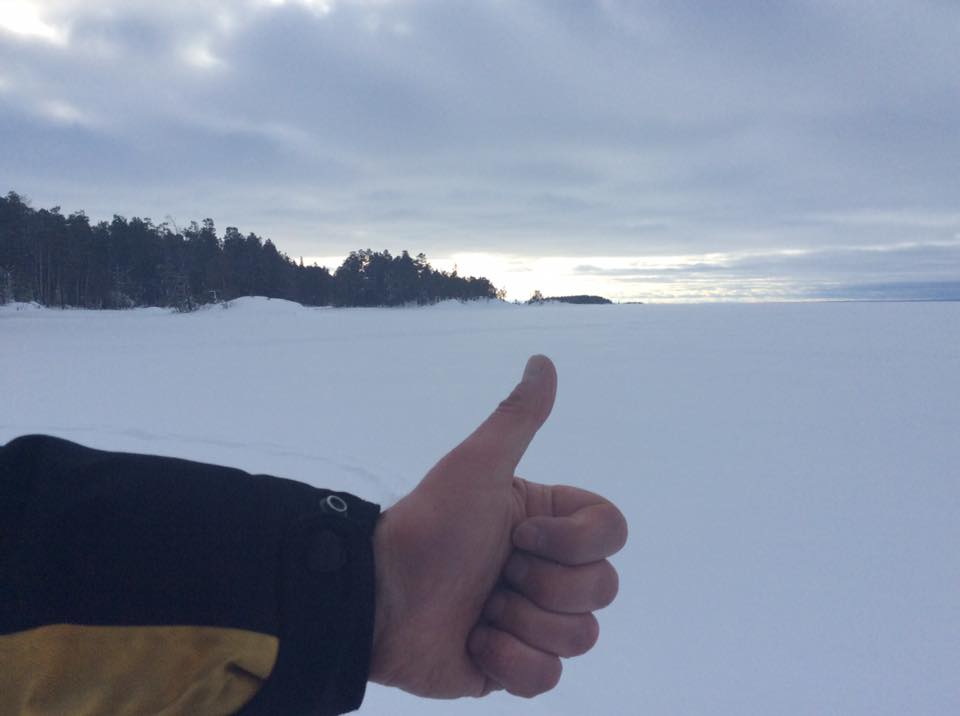
This is the sunny morning on Lake Onega, where the famous White Sea Canal originates. We are heading northwest.
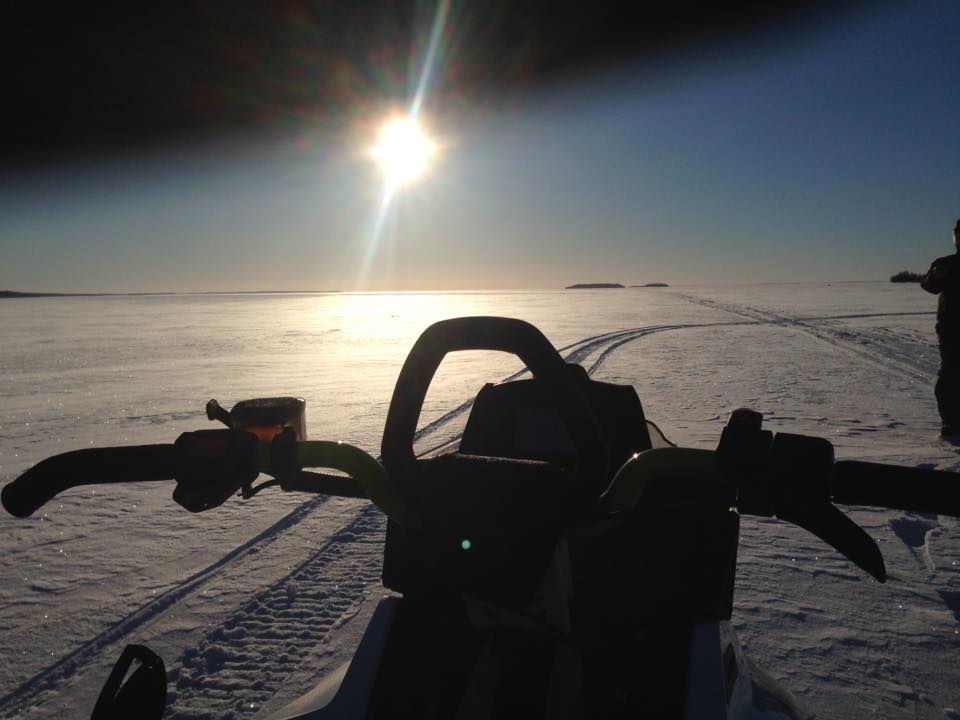
Do you remember the good old Soviet fairy tale movie called “Morozko”? There Alyonushka is sitting in the forest clearing under a century-old oak tree, surrounded by spreading fir trees, whose branches are bent to the ground under the weight of snow caps. There are shining snowdrifts all around and a hut on chicken legs... All this we saw on our way today. Except for Alyonushka. Probably, she couldn't have waited for our combat snowmobile team, which was wading through the deep Karelian forests along the animal trails..
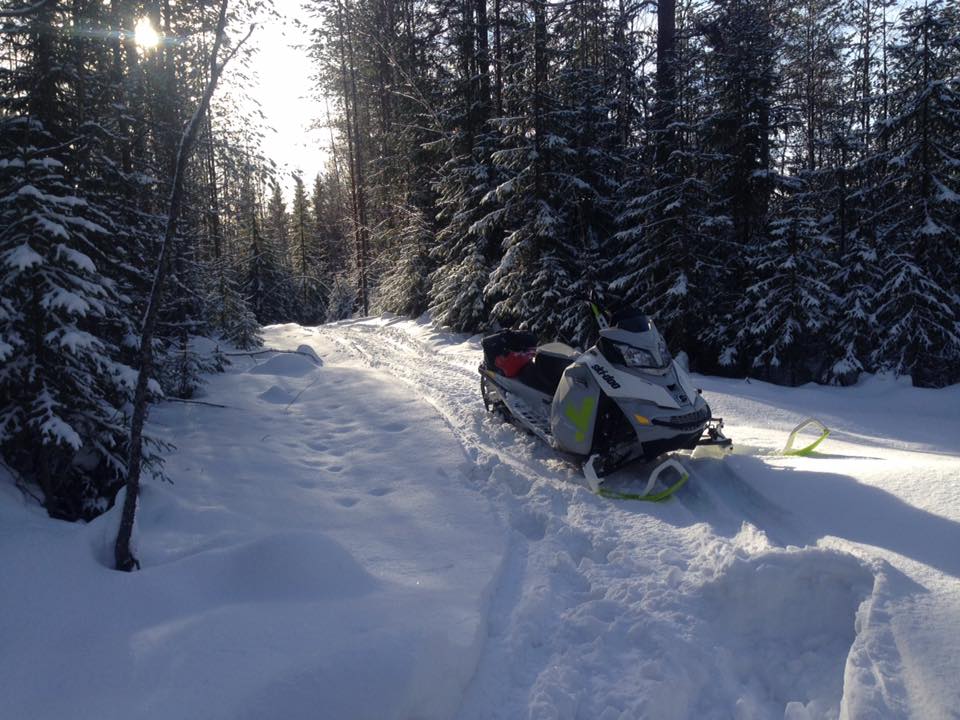
Our cheerful guide Igor led us through untrodden overgrown glades, which were littered with fallen tree trunks, then across the frozen lakes and swamps and along the bridges made of several logs over the melted rivers. Sometimes we literally and metaphorically chopped through a solid forest, squeezing between the trunks, crushing the young growth and using a saw to make our way.
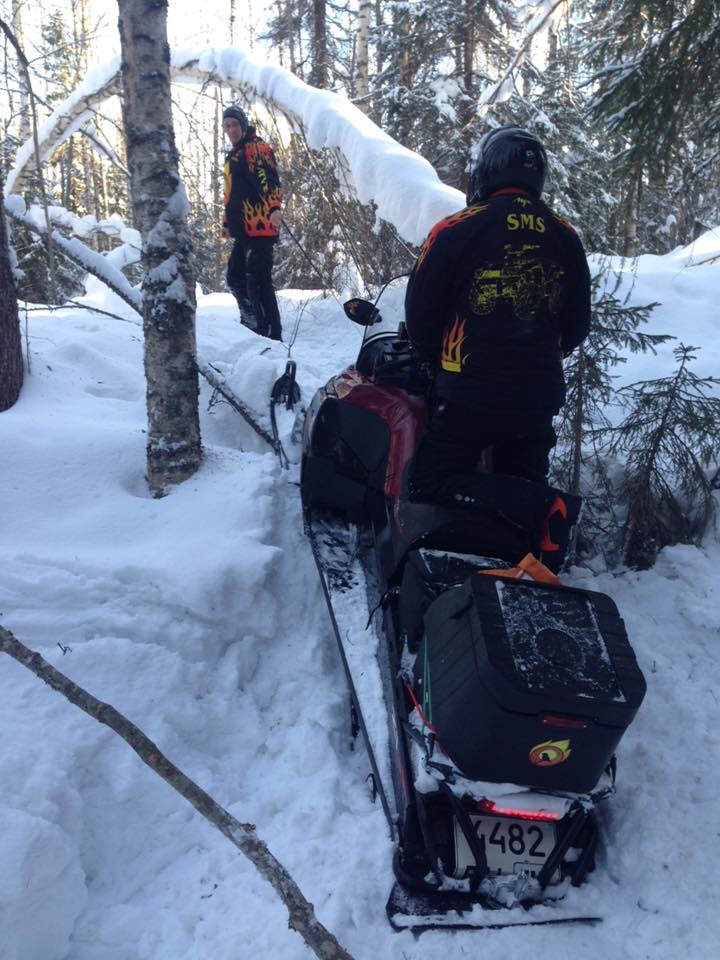
We were lucky not to have any serious equipment breakdowns except for the torn belt of our unfortunate Arctic Cat's variator. The bent bumpers and numerous damages to the sheathing do not count.
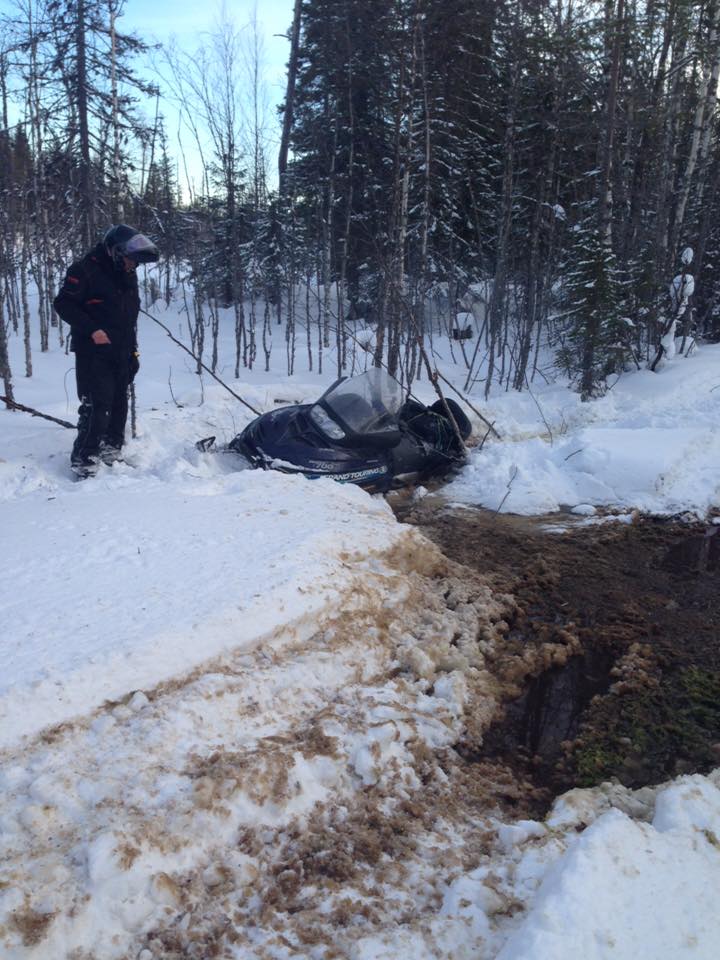
The last few dozen kilometers to the wonderful place of an overnight stay on the shore of Lake Kizh we had to cover at nighttime. Our reward for overcoming another 200 difficult kilometers was a wonderful dinner made from local products with a glass of rye moonshine and a sauna with birch brooms.
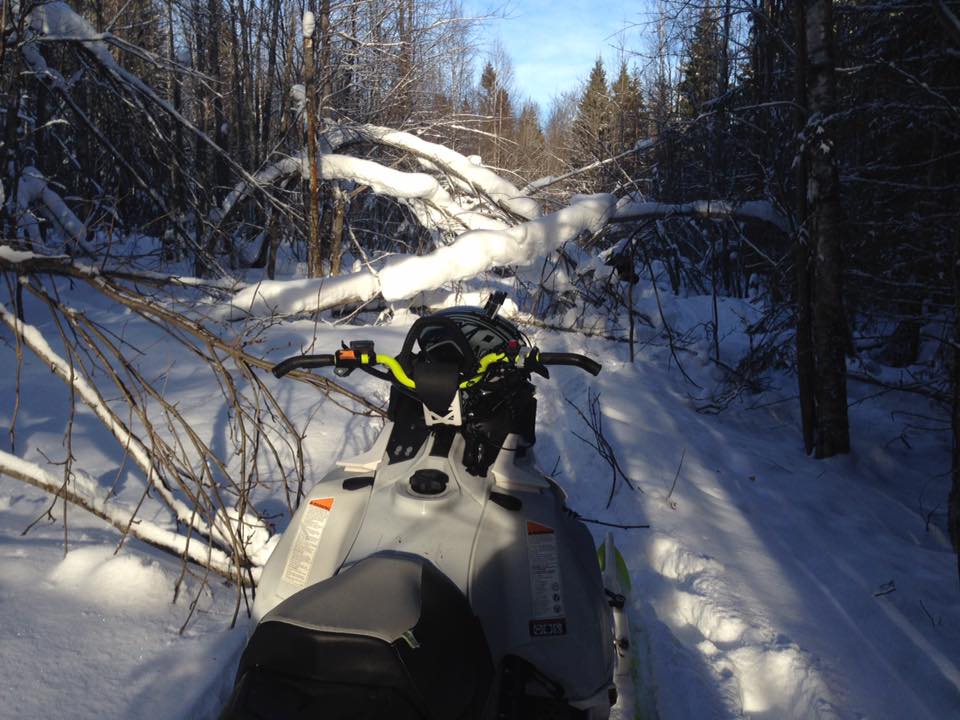
The further we go north, the weaker communication link becomes.
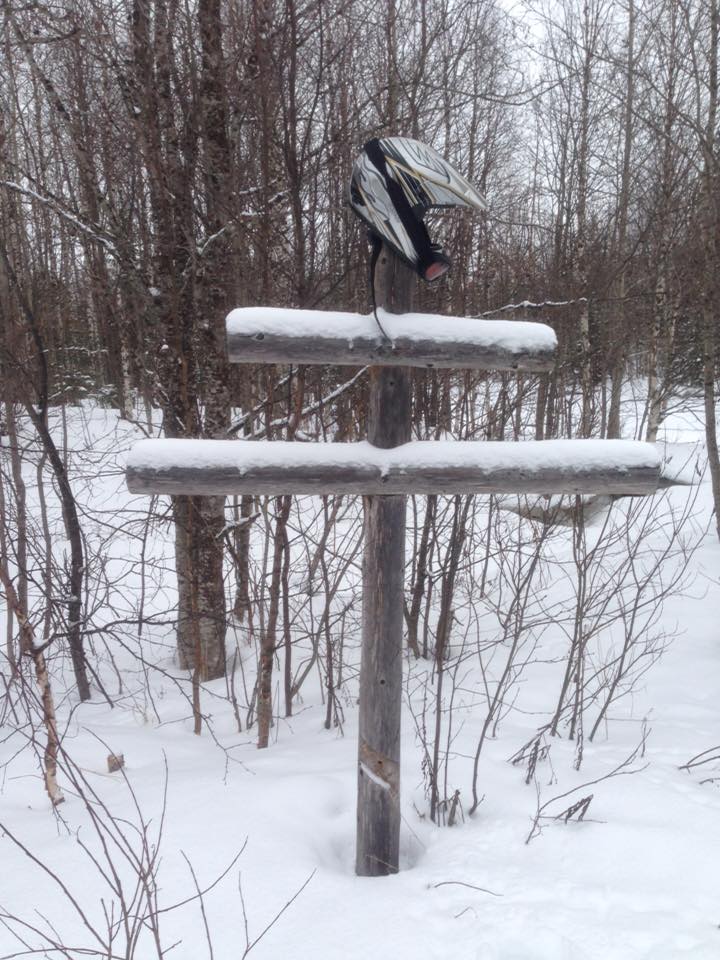
To be more precise, it occasionally appears when we pass through rare settlements. Today we visited only one Kolezhma village, which had a small shop and a church. The locals accompanied our snowmobile column with eyes full of surprise and the dogs barked in greeting, trying to bite a footboard or a boot.
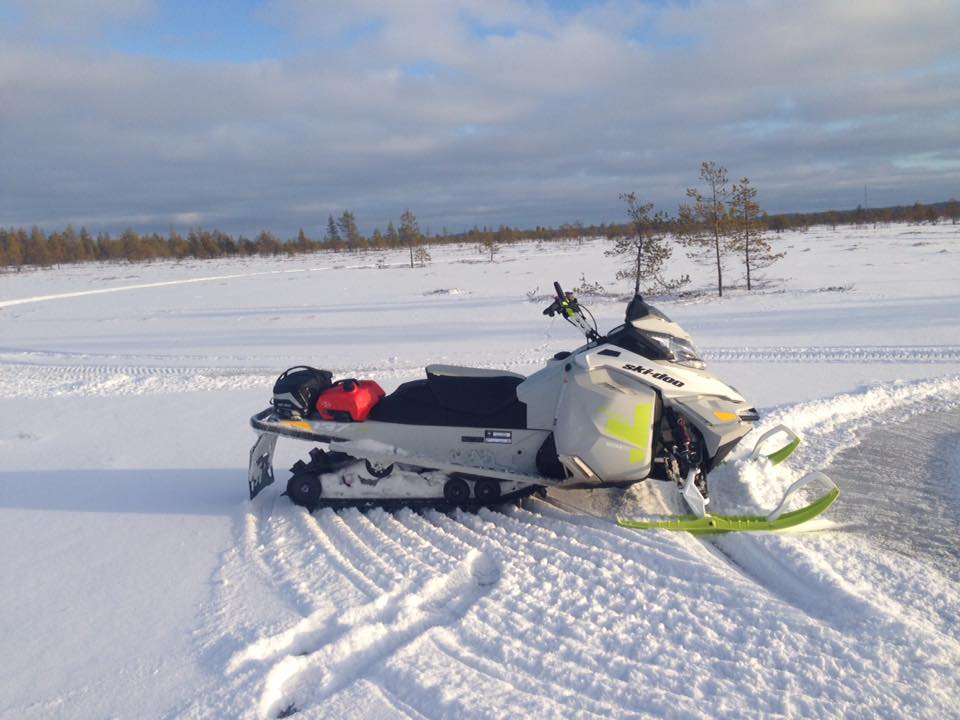
By 6 p.m. after covering 150 kilometers, we came to the shore of the White Sea. The ice hummocks stretching beyond the horizon and the snow-covered remains of fishing boats clearly indicated that we were moving along its shore. The final destination of today is the campsite on Lopsky Island. Our journey goes on!
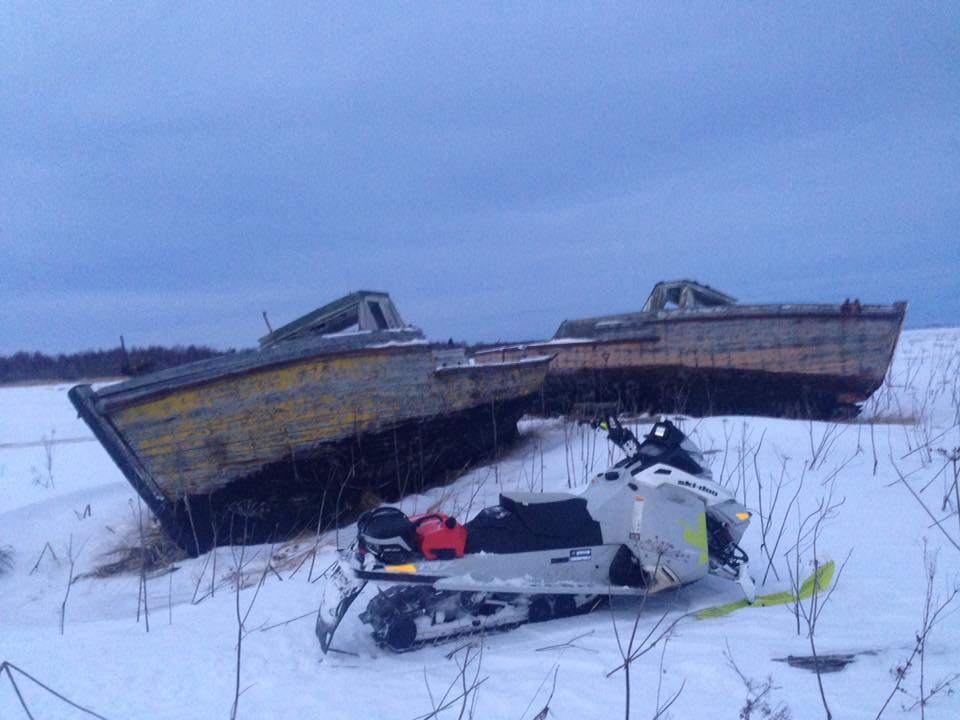
The route of the fourth day of our expedition led us across the frozen sea. In January frosts in Karelia reached the point of –40°C and the sea was covered with an ice shell extending up to 10…12 km from the shore.
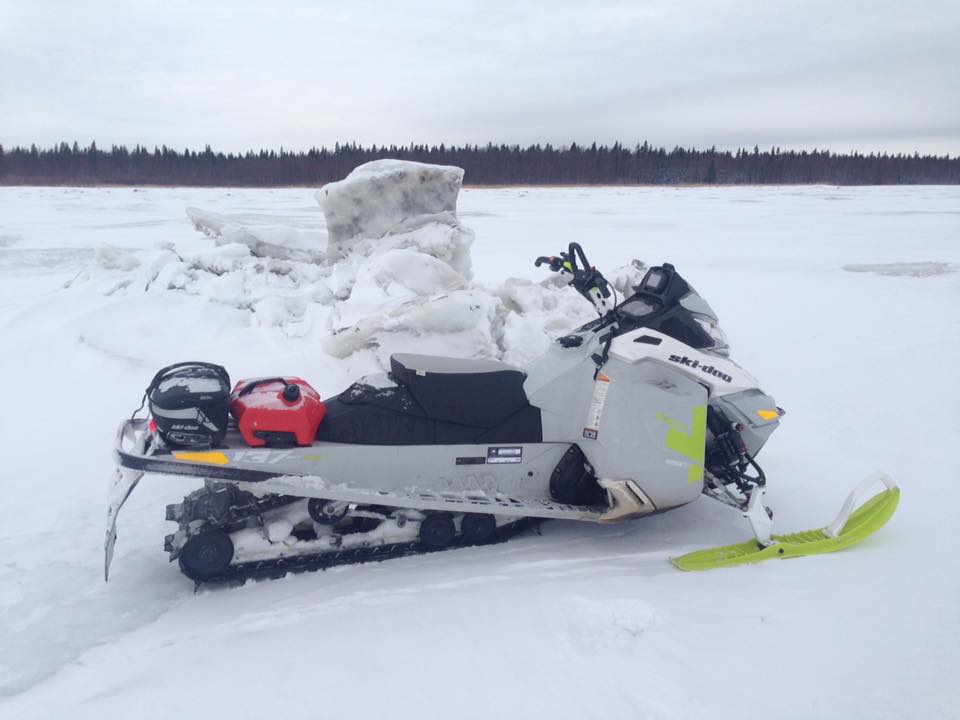
It started snowing in the morning, which worsened the visibility. The column of snowmobiles was slowly moving north, squeezing between ice hummocks and cracks (the chance of falling into which threatened some very serious trouble). Snowdrifts and low clouds made it difficult to pave the way. From time to time the silhouettes of small rocky islands covered with rare trees appearing on the left and on the right.
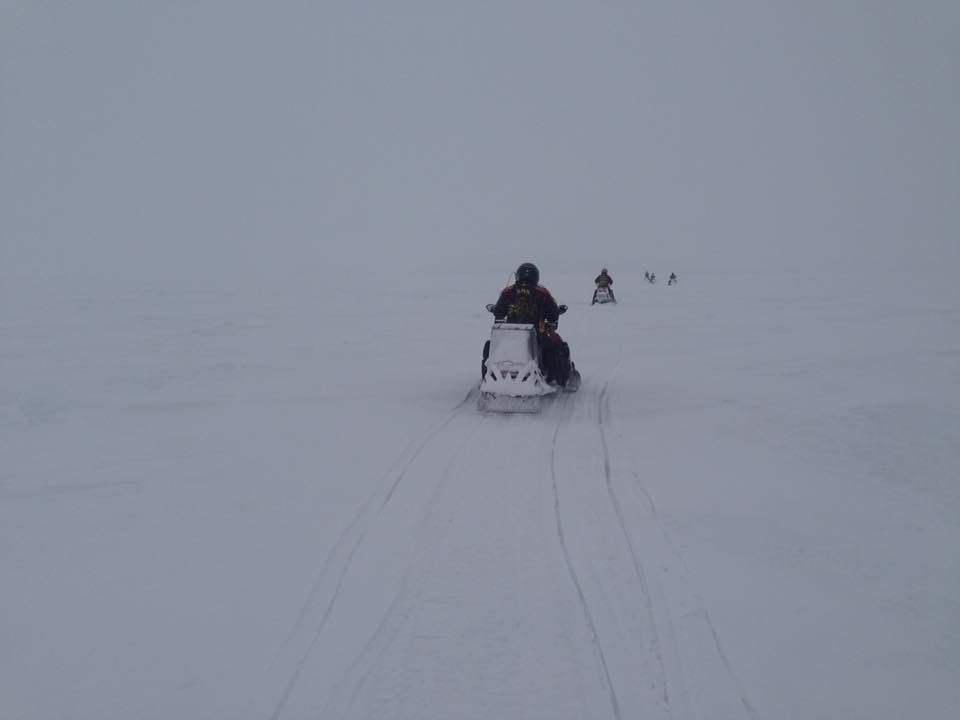
We made a short stop at one of them. The huge boulders, rare vegetation, gnarled fir trees made an impression that not a single human had ever been here. However, walking deep into the island, we unexpectedly found his traces. It was a trap cunningly set on one of the trees. A horizontal stick was nailed to the trunk at a height of about 1.5 meters, at the end of which a bunch of dried fish was tied. And right in front of the bait there was fixed this tricky rusty weapon.
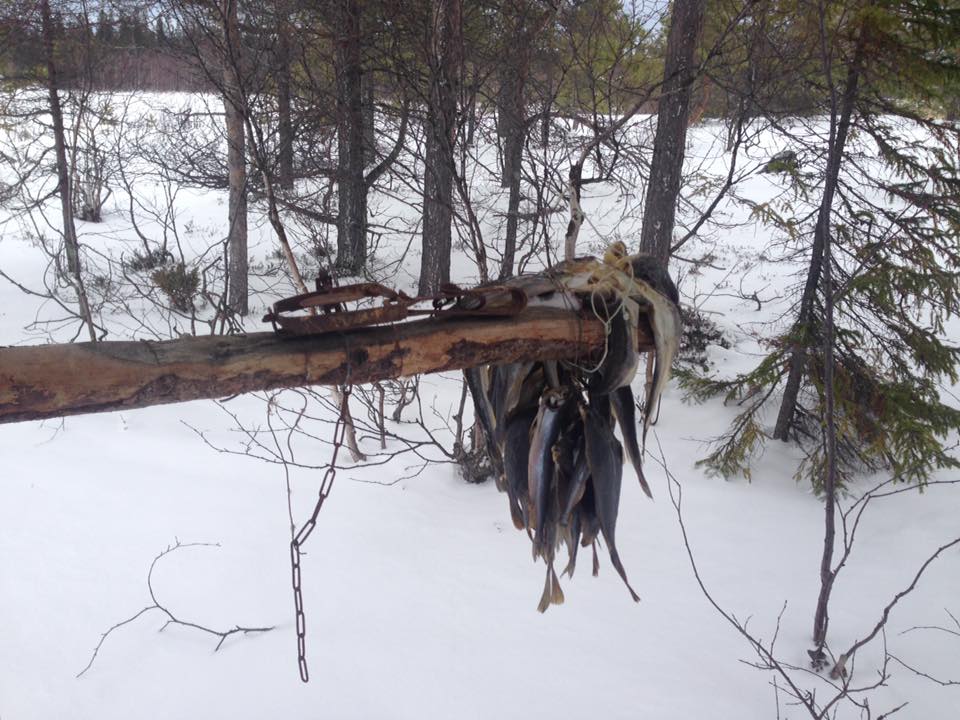
After walking another fifteen meters, we found the same device on another tree, but already with a trapped animal similar to a mink. The poor animal had been suffering for a long time, having fallen into a trap. Perhaps it had been trying to chew off the hind leg caught in the trap, but died because of blood loss.
We are going further, moving away from the coastline. Suddenly we scared a huge fox, which happened to be in this icy desert for unclear reasons. In some areas the reared half-meter high ice formed bizarre pyramids, as if the divine Neptune hit it with his huge staff being very angry. On one of the islands, lost in this endless snow and ice kingdom, we came across a hut with outbuildings and several wooden boats frozen in the ice.
Three men in their forties and a woman of indeterminate age came out of the hut to us. At once they asked us where from and where to we were going, what kind of equipment we had, etc. Then we were invited to come to the house, to have a rest and take some fish with us… It turned out that we accidentally got into the territory of a fishing artel. There were boxes with frozen fish placed under the canopies, some sledges, nets and an old semi-disassembled motorbike. Nobody could explain how and for what it turned out to be here.
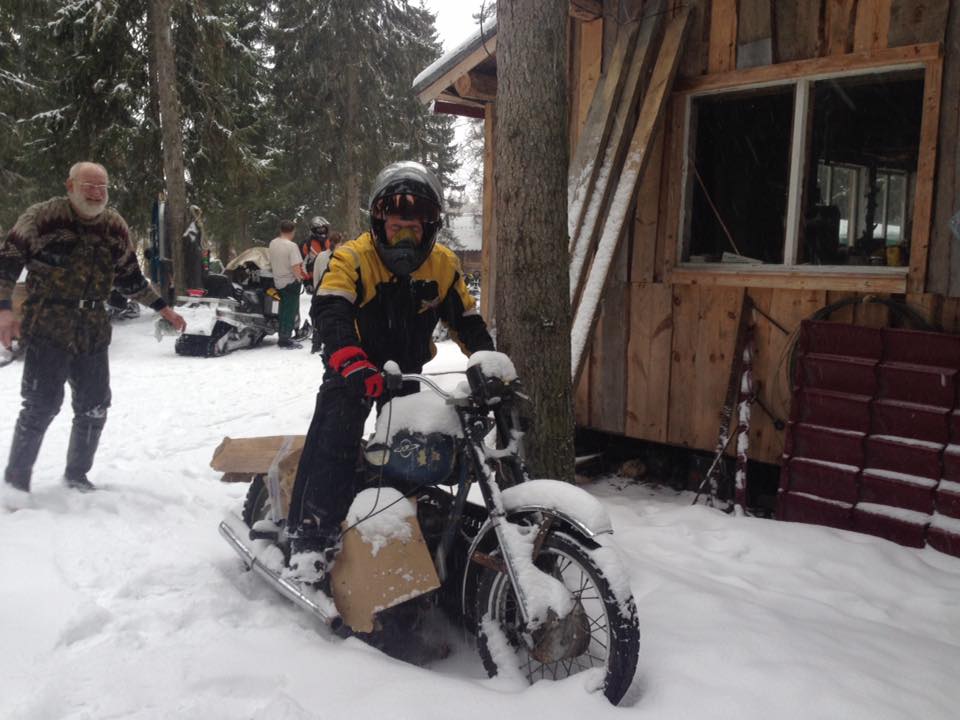
These people live and work here on six-month-long shifts. No communication link, no TV, no newspapers, no anything else… What a lifestyle!
In the afternoon we came to the edge of the ice plateau. Ahead up to the horizon there was only the salty cold water of the White Sea, skirting the Kola Peninsula and connecting with the Barents Sea, which is a part of the Arctic Ocean.
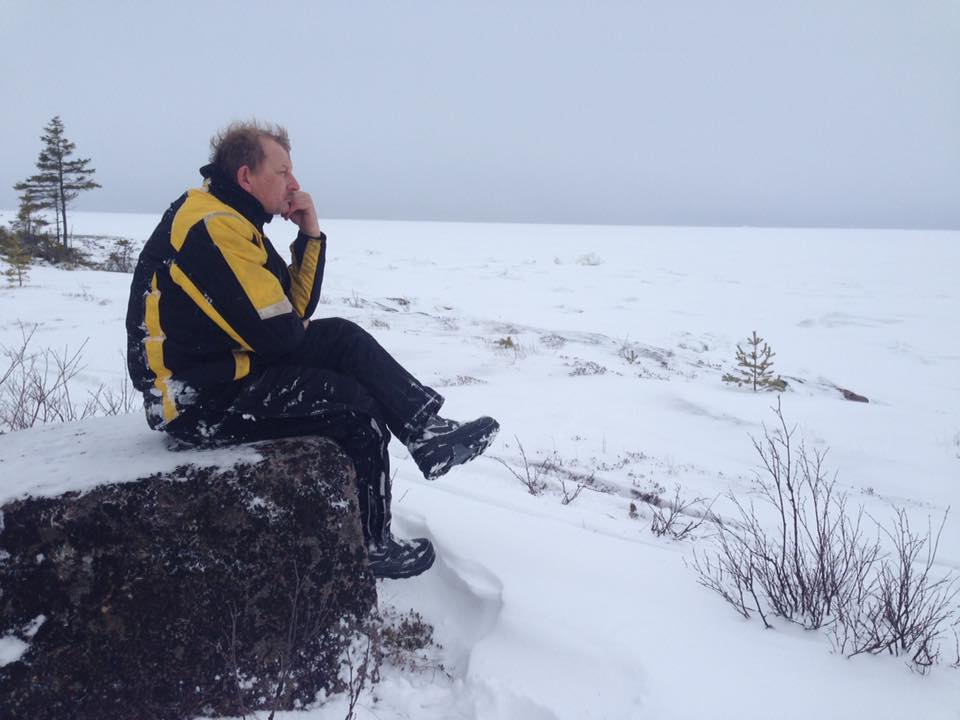
In the evening we arrived in the small town called Kem, from where in summer you can take a ferry to the Solovetsky Islands, which are located 40 kilometers from it. There is no communication link between the islands in winter. Approaching the shore, we saw a wooden church and a dilapidated pier. It turned out that this was the scenery, where Pavel Lungin filmed his wonderful "The Island" movie with Peter Mamonov as the leading part.
Our eight-day snowmobile expedition on the Petrozavodsk – Murmansk route has come to an end. My snow horse's odometer showed 1548 km. It was a real adventure! Unfortunately, I couldn't publish my notes online due to the lack of any Internet link for several days. And, to be honest, I wouldn't have enough time for that anyway.
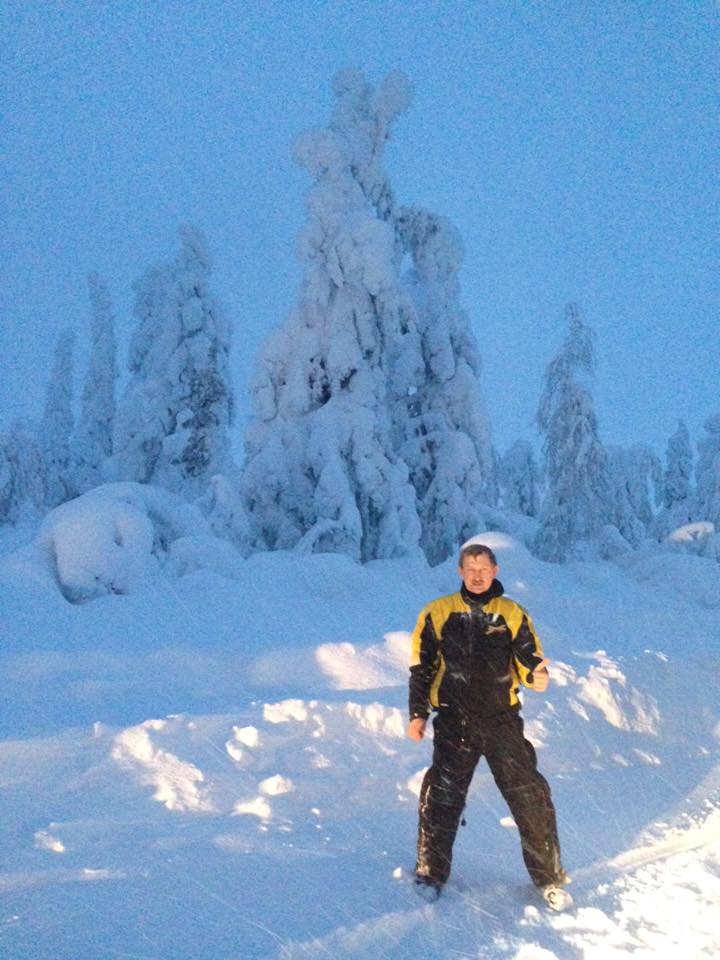
The sixth day of the trip turned out to be especially interesting and memorable. We stayed overnight at the wonderful Niska campsite, located on the shore of the Pyaozer. It is a unique place! We were provided with beautiful wooden houses, a chic restaurant with a fireplace and a sauna with a swimming pool. And all this splendor was built in the remote Karelian taiga a few dozen kilometers from the nearest settlement. In winter you can get here by snowmobiles or by prepared off-road vehicles along the winter road and in summer you go only by water. There is no road and no traffic connection.
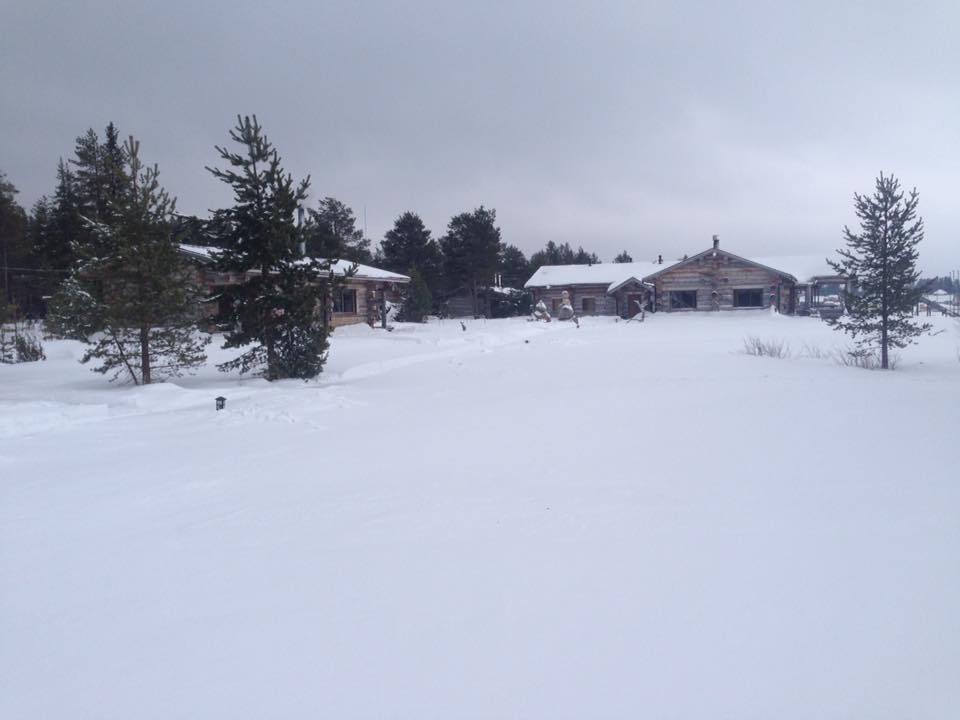
We didn't want to leave this cozy place, but ahead there was the longest and most difficult stage of the expedition. The way was paved north along the Finnish border. On that day we had to cover about 300 kilometers, mainly across the taiga. As we went north, the snowdrifts became higher and higher. Several dozens of centimeters fell at night and in the forest the thickness of the snow cover reached 1.5 meters.
Our average speed in the taiga did not exceed 30 km/h, but taking into account the frequent unforeseen stops, it would be significantly less. Therefore, we had passed the first hundred km section only by 4 p.m.
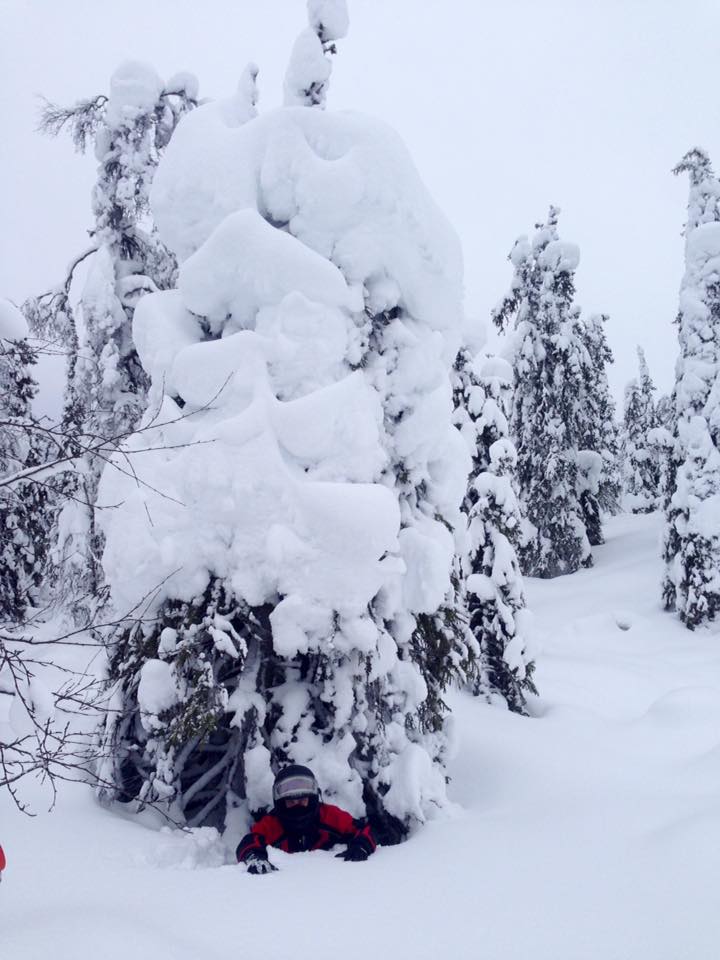
We had a little snack consisting of sandwiches and hot tea from thermoses and continued our way. Before dark we passed by the only close village named Alakurtti and dived into the taiga again. The navigator led us through logging clearings. The beauty around was simply fabulous! I can't even describe in words what fantastic landscapes surrounded us! Unfortunately, the photographs cannot convey this splendour either…
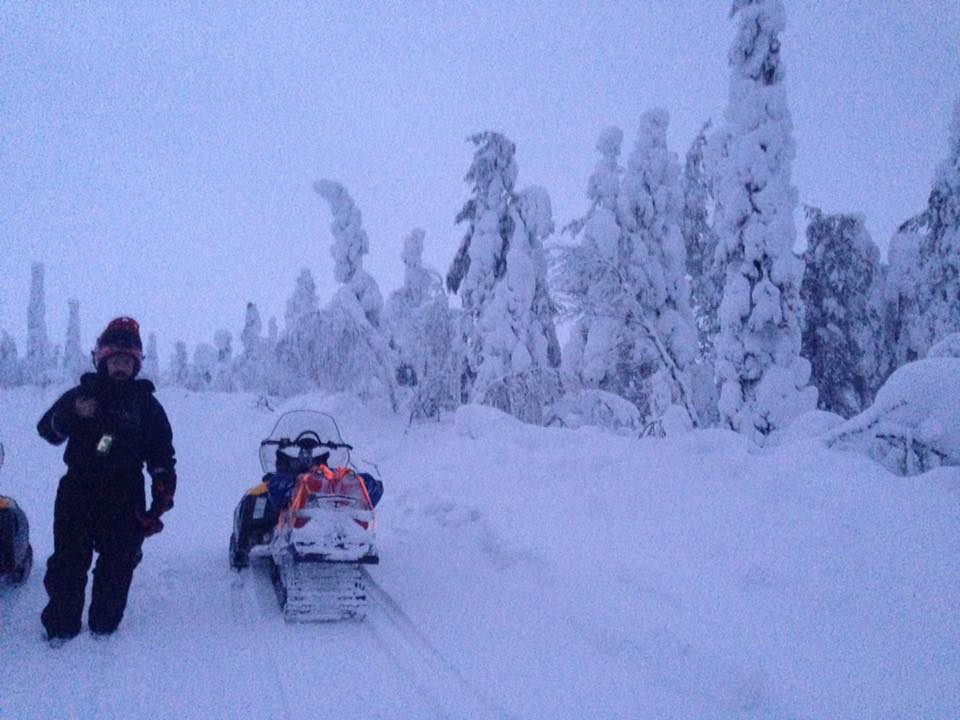
Dashing through the plump freshly fallen snow was an incredibly thrilling experience!
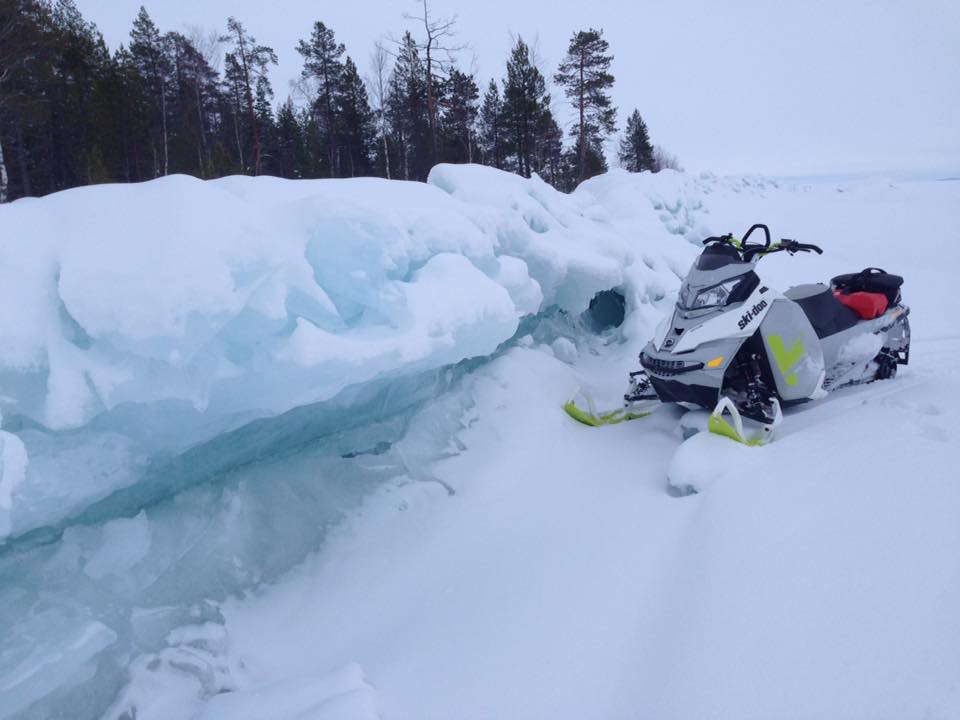
Especially if you have a chance to jump out into a wide straight clearing and ace to the maximum. The skis come off the surface, the snowmobile goes on a glider and turns into a boat or, rather, into a jet ski flying over the waves. The movement of your body controls the trajectory, flying between the trunks of trees, laying the snowmobile in steep turns and catapulting yourself from snow-white hills into a soft feather bed of sparkling snow fluff! The adrenaline charge was off the scale!
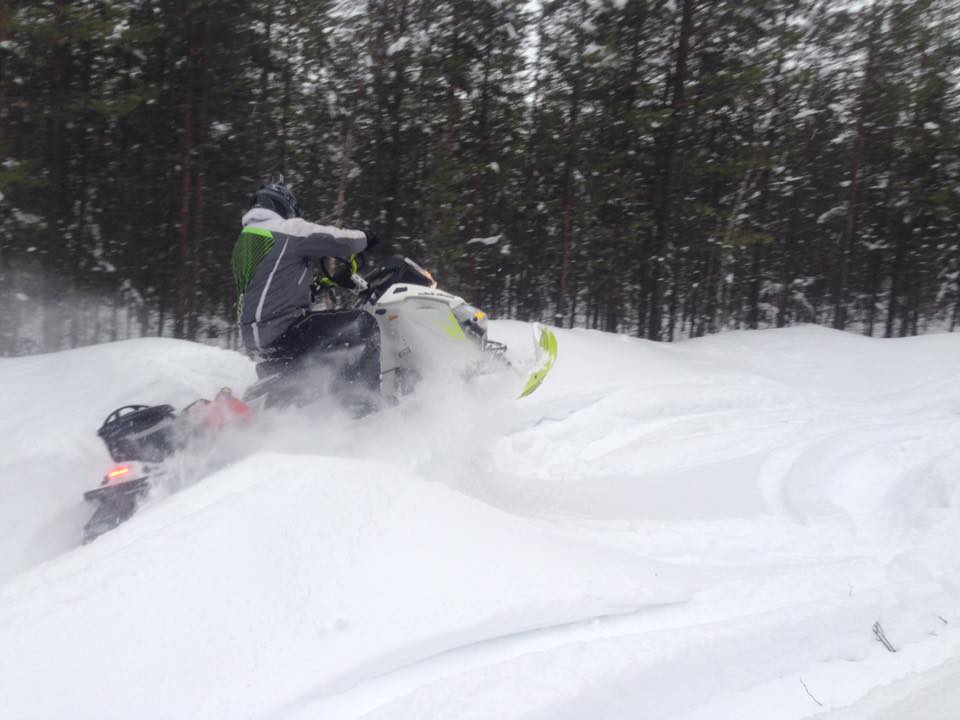
But sometimes, losing your vigilance, you can fly too far and burrow so deep that it would be impossible to make do without the help of your mates. The rescue of a stuck snowmobile from snow captivity was a key performance of the program. At first, it goes cheerfully with jokes and laughs, but when it has to be done for the ...tieth time, the enthusiasm gradually turns into a kind of a hatred for a buried mate, because even approaching him, falling chest-deep into snowdrifts takes much effort. But you may not avoid the fate of the "rescuer", since you may happen to be the “loser” next time.
Meanwhile, the sun disappeared behind the tops of the pines and the track brought us to a narrow clearing, which hadn’t been trodden by a human foot. At least, this winter. The pristine snow dunes and the spreading branches hanging over them led us deeper and deeper into the boundless taiga.
It is very difficult and dangerous to go through the forest at nighttime, when there is no paved trail and it is not clear what to expect after another turn: a cliff, a fallen tree trunk or a destroyed bridge over a stream. Once, moving first and punching a track for the whole column, I noticed a sharp turn too late, so at once I followed a log bridge across the river and went downhill. The snowmobile got stuck a few meters from the water's edge, buried up to the steering wheel in the snow. It took us about half an hour to take it out of there. Our speed decreased so much that we needed hours to overcome some sections even 5 km long.
In deep snow the equipment tended to overheat, so it was necessary to dig out our mates constantly. And when the track took us to the melted river with the destroyed bridge, then everything became quite troublesome. After unsuccessful attempts to find a crossing with solid ice, our guide decided to walk at speed through a thin icy snow-covered crust. Breaking through the ice with caterpillars one by one, we flew over the river, crashing into the sheer snow wall of the opposite bank. Now there were 20 kilometers left to our final destination, the town called Kovdor. But this distance turned out to be the most difficult. The heavy Arctic Cat was constantly burrowing in deep freshly fallen snow and it was incredibly difficult to pull it out even with the help of a winch. We were running out of gasoline. Everyone was soaked down to their underpants and water was squelching into our shoes. By 2 a.m. the first group of four people got out on some kind of paved road.
Two of us, including me, stayed waiting for the mates crawling along our trail, and two more went to the left along the road to look for a passage.
Half an hour later, they reported to us by the radio that they had been arrested for entering a specially protected regime facility, which was situated in the border zone. Another hour passed, I stopped feeling my frozen feet, so in order to warm up a bit, we broke some pine branches and, pouring them with gasoline, set everything on fire. By 3 a.m. the arrested mates returned, being accompanied by an UAZ truck with guards. So far the protocols were made for everyone: who, from where, for what purpose entered the regime territory, etc. An exhausted straggler group finally kept up with us. After filling in the protocols, the senior guard ordered us to go back and added that we had still been lucky, because if we had gone a bit more to the right on the road, we would have got straight to the armed guards of the special object and everything would have turned out much more deplorable…
But even this condition did not inspire us with optimism at all, since it was a crazy idea to return 20 kilometers back along the path, through which we had been struggling for several hours. And according to the navigator, it were only 5 km to Kovdor left straight ahead! We had a long conversation with the senior guard and provided all the weighty arguments, which he could not refuse. At the end, he personally led our gang out of that place through holes in fences, barbed wire and the railway beyond the territory of the facility. At 5 a.m. being wet, frozen, tired and covered with a smell of smoke and gasoline, we reached the only hotel in the border town named Kovdor, which had been recently still closed down.
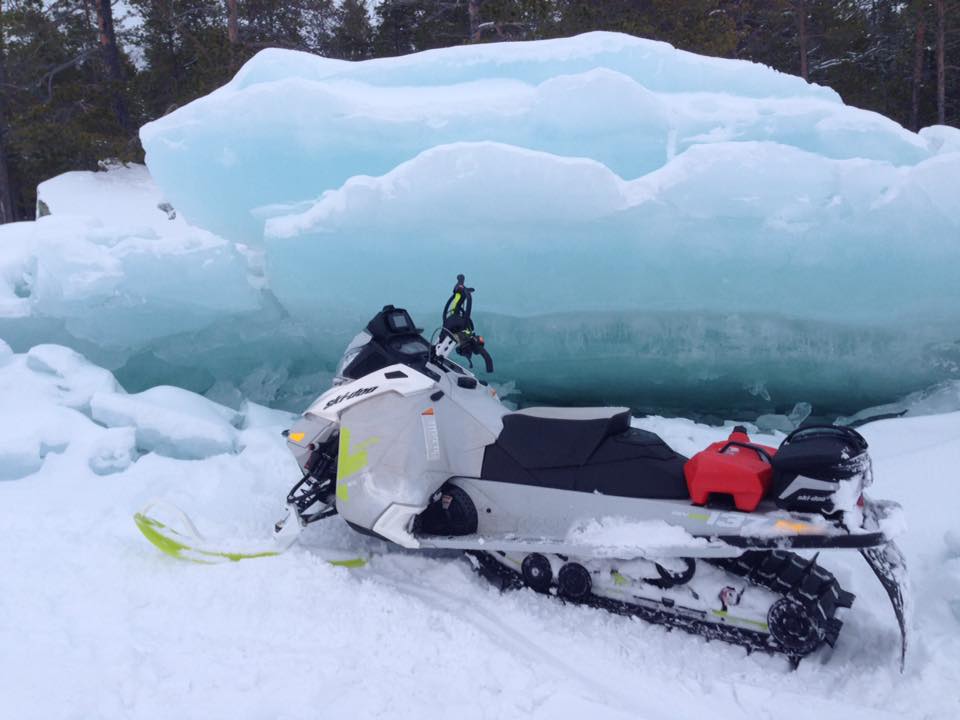
 Cap-travel.ru
Cap-travel.ru